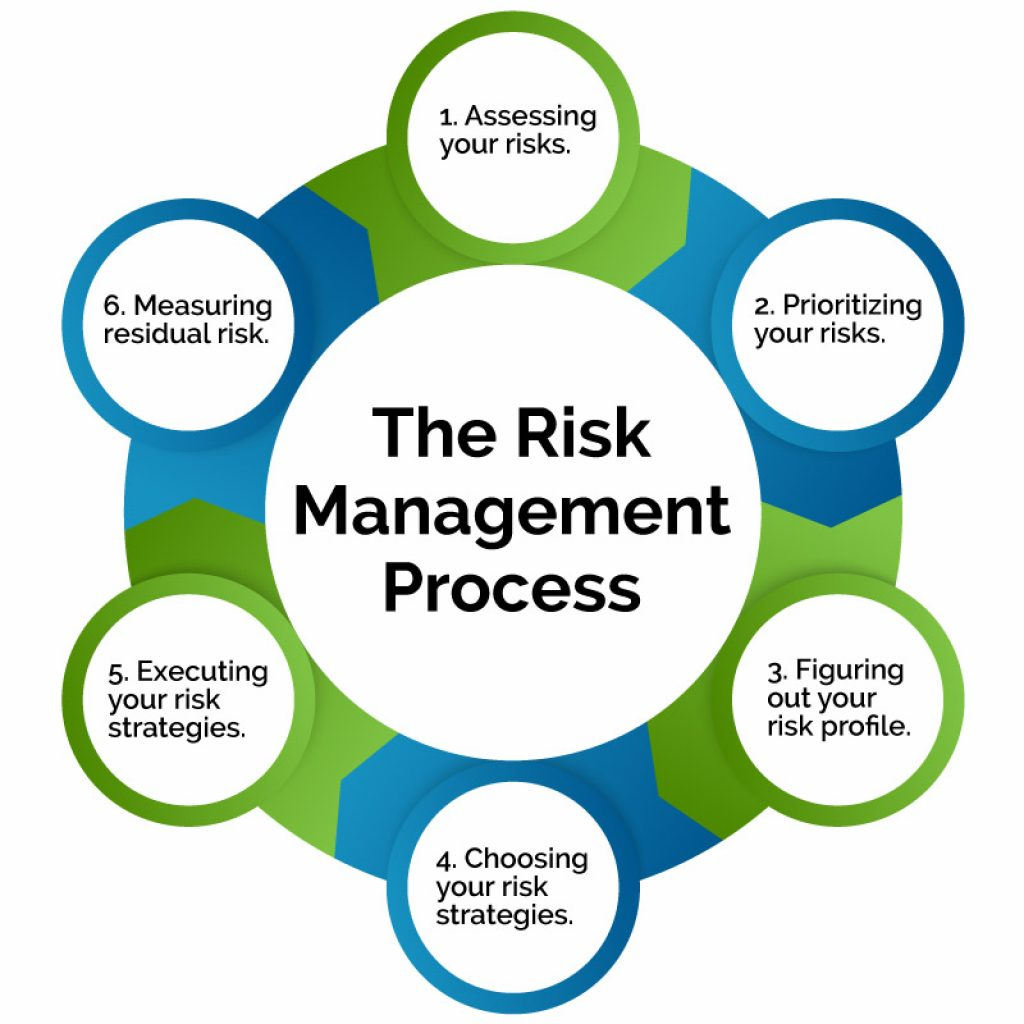
Navigating Uncertainty: Your Essential Guide to Risk Assessment and Mitigation for New Businesses
Starting a new business is an exhilarating journey, filled with innovative ideas, ambitious plans, and the promise of success. However, like sailing into uncharted waters, it also comes with its fair share of unknowns and potential storms. This is where Risk Assessment and Mitigation Strategies become your indispensable compass and sturdy ship.
For new entrepreneurs, the concept of "risk" might feel overwhelming, suggesting doom or failure. But truly, understanding and managing risk isn’t about avoiding challenges; it’s about being prepared, making informed decisions, and building a resilient foundation for your venture to thrive, even when things get tough.
This comprehensive guide will break down the essentials of risk assessment and mitigation in an easy-to-understand way, equipping you with the knowledge to identify, analyze, and strategically respond to the unique challenges facing your new business.
Why is Risk Assessment Crucial for New Businesses?
Many startups focus intensely on product development and marketing, often overlooking the critical step of proactively identifying potential pitfalls. Ignoring risks can lead to costly mistakes, missed opportunities, and even business failure. Here’s why it’s non-negotiable for your new venture:
- Prevents Costly Surprises: Proactive risk management helps you anticipate problems before they escalate into crises, saving you time, money, and reputation.
- Ensures Business Continuity: By planning for disruptions, you increase your ability to keep operations running smoothly, even in the face of unexpected events.
- Boosts Investor Confidence: Lenders and investors are more likely to support businesses that demonstrate a clear understanding of potential risks and a plan to manage them. It shows you’re serious and professional.
- Aids Strategic Decision-Making: Understanding potential risks helps you make smarter choices about everything from product features and pricing to hiring and market entry.
- Fosters Resilience: A business that understands its vulnerabilities is a business that can adapt and bounce back stronger from setbacks.
The 5-Step Risk Assessment Process for Beginners
Don’t let the term "risk assessment" intimidate you. It’s a systematic, common-sense approach that anyone can apply. Here’s a simplified 5-step process:
Step 1: Identify the Risks – What Could Go Wrong?
This is the brainstorming phase. Think broadly about every aspect of your business. Involve your team (if you have one) – different perspectives can uncover more potential issues.
How to Identify Risks:
- Brainstorming Sessions: Gather your team and ask "What if…?" questions.
- SWOT Analysis: Look at your Strengths, Weaknesses, Opportunities, and Threats. Weaknesses often highlight internal risks, while Threats are external risks.
- Checklists & Industry Benchmarks: Research common risks in your specific industry.
- Review Past Experiences: Think about challenges you’ve faced in previous roles or projects.
- Customer & Market Research: What are your potential customers’ pain points? What are market trends?
Examples of Areas to Consider for Risk Identification:
- Financial Risks: Not enough startup capital, cash flow problems, unexpected expenses, pricing errors, economic downturns.
- Operational Risks: Supply chain disruptions, equipment failure, technology glitches, staff turnover, poor quality control.
- Strategic Risks: Market changes, intense competition, flawed business model, poor product-market fit.
- Legal & Compliance Risks: Not adhering to regulations, contract disputes, intellectual property infringement, licensing issues.
- Reputational Risks: Negative customer reviews, PR crises, ethical missteps.
- Cybersecurity Risks: Data breaches, hacking, ransomware attacks.
- External Risks: Natural disasters, political instability, public health crises (like pandemics).
Step 2: Analyze & Assess the Risks – How Likely & How Bad?
Once you have a list, it’s time to evaluate each risk. You need to understand two key things:
- Likelihood (Probability): How likely is this risk to occur? (e.g., Very Low, Low, Medium, High, Very High)
- Impact (Severity): If this risk does occur, how much damage would it cause to your business? (e.g., Insignificant, Minor, Moderate, Major, Catastrophic)
Tip for Beginners: You don’t need complex formulas. Use a simple qualitative scale (like the ones above) or a 1-5 rating.
- Example:
- Risk: Key supplier goes out of business.
- Likelihood: Medium (depends on your supplier research).
- Impact: High (could halt production, major revenue loss).
Step 3: Evaluate & Prioritize the Risks – Which Ones Matter Most?
Now, combine the likelihood and impact to prioritize your risks. Focus your energy on the risks that pose the biggest threat.
- High Likelihood + High Impact = CRITICAL RISKS: These are your top priorities. You MUST develop a robust plan for these.
- High Likelihood + Low Impact = MANAGEABLE RISKS: These are annoying but won’t sink your ship. Still, plan to address them.
- Low Likelihood + High Impact = POTENTIAL THREATS: These are rare but devastating. Have a contingency plan.
- Low Likelihood + Low Impact = MINOR RISKS: Keep an eye on them, but don’t lose sleep over them.
Tip: Visualize this with a simple matrix (Impact on one axis, Likelihood on the other). Risks falling into the "High/High" quadrant are your immediate concern.
Step 4: Develop Mitigation Strategies – What’s the Plan?
This is where you plan how to deal with each prioritized risk. There are generally four main strategies for risk mitigation, often called the "4 T’s" or "4 R’s":
- Terminate (Avoid): Eliminate the risk entirely by choosing a different path.
- Example: If a certain product line requires a highly unstable supply chain, you might decide not to offer that product.
- Treat (Reduce/Control): Take actions to reduce the likelihood or impact of the risk. This is the most common strategy.
- Example: To reduce the risk of a data breach, invest in strong cybersecurity software and employee training.
- Transfer (Share): Shift the financial burden or responsibility of the risk to another party.
- Example: Purchase business insurance (liability, property, cyber insurance) to transfer financial risk. Outsource IT to a specialist to transfer IT-related risks.
- Tolerate (Accept): Acknowledge the risk and decide to accept its potential consequences, often because the likelihood or impact is very low, or the cost of mitigation outweighs the benefit.
- Example: A small, temporary dip in sales during an unexpected local road closure might be accepted as a minor inconvenience.
Practical Mitigation Examples for Common New Business Risks:
- Risk: Insufficient Startup Capital / Cash Flow Issues
- Mitigation:
- Create a detailed, conservative financial projection and budget.
- Secure contingency funding (e.g., line of credit, emergency fund).
- Diversify revenue streams.
- Monitor cash flow daily/weekly.
- Negotiate favorable payment terms with suppliers and customers.
- Mitigation:
- Risk: Key Employee Leaves / High Staff Turnover
- Mitigation:
- Develop clear standard operating procedures (SOPs) so knowledge isn’t lost with one person.
- Cross-train employees on multiple tasks.
- Foster a positive work culture and offer competitive compensation/benefits.
- Have a succession plan for critical roles.
- Mitigation:
- Risk: Supply Chain Disruptions (e.g., a critical supplier goes out of business)
- Mitigation:
- Identify multiple potential suppliers for critical components.
- Maintain a small buffer inventory of essential goods.
- Develop strong relationships with suppliers.
- Consider local suppliers to reduce shipping risks.
- Mitigation:
- Risk: Cybersecurity Breach / Data Loss
- Mitigation:
- Implement strong passwords and multi-factor authentication.
- Regularly back up all critical data to secure off-site locations.
- Install reputable antivirus and firewall software.
- Educate employees on cybersecurity best practices (phishing, suspicious links).
- Consider cyber liability insurance.
- Mitigation:
- Risk: Negative Online Reviews / Reputational Damage
- Mitigation:
- Prioritize excellent customer service and product quality.
- Actively monitor online reviews and social media mentions.
- Develop a clear, prompt response strategy for negative feedback (address concerns, offer solutions).
- Encourage positive reviews from happy customers.
- Mitigation:
- Risk: Market Changes / New Competitors
- Mitigation:
- Continuously monitor market trends and competitor activities.
- Be agile and willing to pivot your business model or product offerings.
- Maintain a strong Unique Selling Proposition (USP).
- Invest in R&D to stay innovative.
- Mitigation:
- Risk: Non-Compliance with Regulations / Legal Issues
- Mitigation:
- Consult with legal professionals early on (for contracts, intellectual property, business structure).
- Stay informed about industry-specific regulations and licenses.
- Implement clear policies and procedures to ensure compliance.
- Regularly review contracts and agreements.
- Mitigation:
Step 5: Monitor & Review – Is the Plan Working?
Risk management isn’t a one-time task; it’s an ongoing process. Your business environment, market conditions, and internal operations will constantly evolve, bringing new risks and changing the nature of existing ones.
- Regular Check-ins: Schedule periodic reviews of your risk assessment (e.g., quarterly, annually, or after significant business changes).
- Track Performance: Are your mitigation strategies effective? Are you seeing fewer incidents of certain risks?
- Learn from Incidents: If a risk does materialize, analyze what happened, why it happened, and how your mitigation strategy performed. Adjust your plans accordingly.
- Stay Informed: Keep an eye on industry news, economic forecasts, and technological advancements that might introduce new risks or opportunities.
Building a Culture of Risk Awareness
Beyond a formal process, encourage a mindset of risk awareness throughout your new business.
- Lead by Example: Show your team that you take risk management seriously.
- Open Communication: Create an environment where employees feel comfortable identifying and reporting potential risks without fear of blame.
- Training: Provide basic training on risk awareness for all team members.
- Empowerment: Give employees the tools and authority to address minor risks at their level.
Conclusion: Your Proactive Path to Success
Risk assessment and mitigation strategies are not roadblocks to innovation; they are guardrails that protect your new business as it grows. By proactively identifying potential challenges, understanding their impact, and developing smart, actionable plans, you transform uncertainty into opportunity.
Embrace risk management as an essential part of your entrepreneurial toolkit. It will not only help you navigate the inevitable challenges of launching a new venture but also build a more robust, resilient, and ultimately, more successful business. Start small, be consistent, and watch your new business thrive, even in turbulent waters.



Post Comment